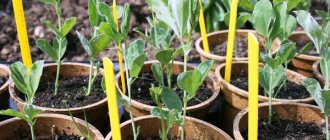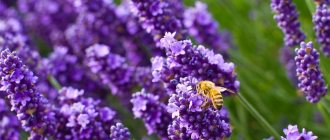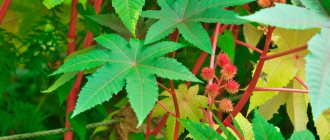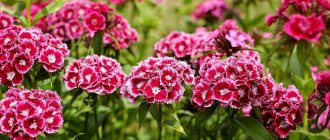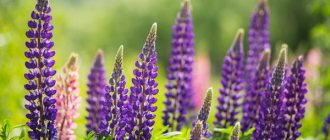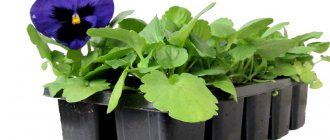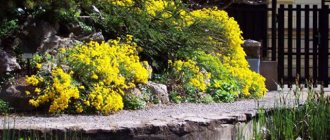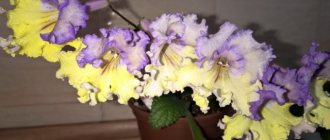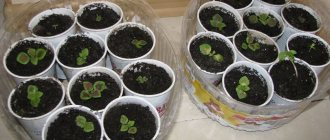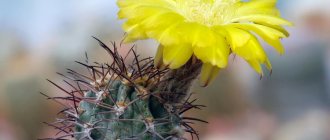Verbena is a plant that does not require painstaking care, but decorates any corner of the garden, flower bed or flower garden with its delicate and bright inflorescences. Even a florist who does not have much experience and sufficient knowledge about breeding and growing flowers can cope with its cultivation.
The only difficulty in cultivating this crop is that it is not frost-resistant, so residents of the middle zone or northern regions are forced to plant it in the garden or flower garden every year. But, given the simplicity and ease of the process, you can decide on this.
Brief information about the plant
The Verbena plant genus includes more than 100 annual or perennial herbaceous or subshrub species. Most of them are of South American origin. The plant is distributed everywhere, so it has many popular names. It is called godmother grass, dove grass, cast iron grass, and iron grass. There are also names associated with mythological characters: tears of Juno, Hercules' grass, blood of Mercury.
This flowering plant has been known since ancient times. It was used in religious rites by the ancient Greeks and Egyptians. In Christianity, there is a legend that it was these bushes that bloomed in places watered with the blood of the crucified Christ.
Verbena is considered the guardian of the hearth, protecting the family from quarrels and strife, and the house from evil spirits and misfortunes. Verbena is used not only to decorate homes and gardens; amulets and amulets are still made from it; some of its varieties have found use in cooking and medicine.
The plant has a wide variety of colors: from white to pink-red and blue-violet. The flowers are small, collected in umbrella inflorescences with a diameter of 15-17 cm. The height of most hybrid varieties is 20-50 cm, but there are giant varieties that grow up to 1 m.
In Russia it is grown as an annual; it grows well both in open ground and in flowerpots, allowing summer residents to create a unique floral design.
general description
Verbena is a herbaceous plant with highly branching stems that was distributed from South America throughout the world. The bush can grow in height from 20 cm to a meter, and under particularly favorable conditions - up to one and a half meters. In tall varieties, the stems are straight and elongated, while in medium and low forms they can be creeping. Sometimes the shoots become leafless, leaving only inflorescences at the tops.
The leaf blades are small or medium in size and may be covered with shaggy hairs. The root system is shallow, due to which the species cannot withstand frosts below -3ºС, therefore it is not capable of overwintering without shelter in frosty winter conditions.
Flowering occurs very densely and abundantly; the bush can form a bright ball, on which the stems and leaves are not visible through the inflorescences. Flower colors are presented in a wide palette ranging from white to bright pink and lilac shades. There are forms with uneven coloring or a white spot inside.
Sowing time
To grow annual verbena, the seedling method is used. This is due to the length of the period from sowing to flowering, which is 70-100 days, in some varieties it reaches 120 days. The packaging of seeds from responsible producers always indicates the recommended sowing time.
Regions
When determining the sowing time, you should start from the planned time of planting verbena seedlings outside, since it does not tolerate frost. In different regions, warm weather without dropping to sub-zero temperatures at night comes at different times. This should serve as a key point when calculating sowing dates.
Sowing time:
- Central region – March;
- Northwestern region – early – mid-April;
- Ural, Siberia - April;
- Central Black Earth and North Caucasus regions - late February - mid-March.
Moon calendar
Climate features make it possible to determine the period of sowing in different regions. Specific sowing dates are helped by choosing the lunar calendar, which determines favorable and unsuitable days in the desired month.
You should not sow on the days of the full moon and new moon. The most productive days for sowing are the days during the waxing Moon, but during the waning Moon you can also carry out sowing work.
Care
Maintenance does not require too much effort.
- Watering . It is necessary to regularly supply the plant with water and not allow the substrate to dry out. It is better to place it in a sunny, warm place, which is best for these plants. Proper care requires regular watering, especially during periods of prolonged drought. The soil in which the plant is grown should not be dried out or flooded. Drought and excess humidity negatively affect the development of verbena. Therefore, verbena planted in pots must additionally be provided with proper drainage.
- Fertilizer . Proper fertilizer is necessary, especially during flowering. Multi-component fertilizers are ideal.
- Trimming . It is worth taking care to regularly remove faded inflorescences and dry stems, which affects longer flowering and good propagation of the plant.
Verbena in landscape design, photo
Preparing for sowing
Before planting, it is necessary to carry out pre-sowing treatment of the seeds, prepare the soil and containers for sowing.
Seed preparation
Verbena can be sown with either purchased or self-collected seeds. But when collecting seeds from hybrid plants, you can get flowers that differ in appearance from the mother flowers.
Your seeds must be subjected to disinfection, which is carried out by soaking the seeds for 2 hours in a slightly pink solution of potassium permanganate. Also, in accordance with the instructions, the following drugs are used: Fitosporin, Fundazol, Baktofit.
Verbena seeds, although they retain their viability for up to 5 years, are not 100% germinating. The surface of the seeds has a very dense shell, which protects them well, but makes germination difficult.
To increase germination, seeds are subjected to a stratification procedure (creating conditions conducive to better seed germination).
Verbena stratification procedure:
- Moisten a cotton napkin with water and squeeze lightly.
- Spread the seeds evenly on a damp cloth.
- Carefully fold the napkin and place it in a plastic bag.
- Place a damp cloth wrapped in a bag in the refrigerator (in the vegetable compartment) for 4-5 days.
This procedure allows you to soften the hard seed coat and increase germination. Additionally, the seeds can be treated with growth-stimulating drugs: Energen, Zircon, Epin-Extra.
Not all types of verbena require stratification. An indication of the need for the procedure is indicated on the packaging.
Soil selection
Verbena is undemanding to the soil when sowing. The main conditions are a loose structure and good water and air permeability. Any universal flower soil of neutral acidity is suitable for planting. In order to increase its air and water permeability, sand, vermiculite or perlite are added in a ratio of 4:1. The preferred option would be vermiculite, which not only serves as a leavening agent, but also acts as a temperature stabilizer.
You can prepare the soil yourself by mixing garden soil, peat and sand in a ratio of 2:4:1. If garden soil has high acidity, you need to add wood ash (100 g of ash per 1 kg of soil).
Sowing soil prepared independently must be disinfected. For this purpose, the soil mixture is spilled with a pink-red solution of potassium permanganate, treated with fungicides (Fitosporin, Fundazol) in strict accordance with the instructions, or calcined for 20-30 minutes. in the oven at 70°C.
Selection of capacity
Since verbena seeds do not have high germination rates, they are usually sown in a common container rather than in separate containers. Any containers are suitable: plastic, clay, peat, wood, the optimal depth is 8-10 cm. You can sow in individual containers, subsequently leaving one of the strongest seedlings in the pot, which allows you to avoid picking in the future.
Sowing containers, with the exception of peat containers, must be disinfected with a dark pink solution of potassium permanganate.
Features of the view
The main feature of the plant is flowing stems , the length of which reaches 60 cm. The main purpose is to grow in hanging flowerpots, pots, hanging boxes and baskets for the purpose of landscaping balconies, terraces, gazebos.
Another feature of this plant:
- the flower is food for caterpillars and butterflies;
- is actively used in medicine (improves appetite, activates brain activity, treats abscesses);
- in cooking (used to give pickled cucumbers a special aroma);
- on the farm (verbena is an excellent honey plant).
Sowing work - step-by-step instructions
Sowing verbena seeds for seedlings consists of a number of simple sequential operations, and does not cause difficulties even for novice gardeners.
- Fill pre-prepared containers with soil mixture. It is better to prepare a separate container for each variety.
- Level the soil, lightly compact it and moisten it with a spray bottle.
- Distribute the treated and stratified seeds evenly on the soil surface. Lightly sprinkle with soil or peat.
- Moisten the sown seeds a little using a fine spray.
- Cover the container with seeds with film, a plastic lid or glass.
When planting, follow the recommendations of the seed manufacturer: there are varieties that germinate when exposed to light and do not require sprinkling with soil.
Choosing the time to plant seeds for seedlings
You can plant seeds for seedlings from January to April. But at this time the seedlings do not have enough lighting. Therefore, to obtain seedlings at the end of April, verbena is sown in January-February. Then the verbena will bloom in May.
Sowing of seeds is carried out taking into account the growing region:
- middle zone: landing time - March;
- southern regions: end of February – end of March;
- northern regions: late March – late April.
On short days, growing strong seedlings will require additional lighting.
Conditions for crops
The most important conditions for the germination of verbena seeds are temperature and moisture. The optimal temperature is +25°C, so it is important to place the container in a warm and well-lit place.
Although moisture is necessary for germination, condensation should be avoided and 15-20 minutes daily. ventilate microgreenhouses.
Verbena – photo
The simplicity and unpretentiousness of verbena are combined with its neat and graceful beauty. Convince yourself of this thanks to the photographs in our gallery. Enjoy watching!
Photo: plants.tlcgarden.com
Photo: etovarikoz.ru
Photo: chrome-effect.ru
Photo: greenagri.ru
Photo: 2sotki.ru
Photo: artfile.ru
Photo: dvervleto.su
Photo: 1zoom.ru
Photo: vasily-sergeev.livejournal.com
Photo: liveinternet.ru
Photo: ludmila20141.livejournal.com
Photo: flormar-shop.ru
Photo: pxhere.com
Photo: plants.chaletnursery.com
Photo: ok.ru
Photo: dlobal.ru
Photo: stroypay.ru
Photo: tsvetovodovklub.ru
Photo: pixy.org
Photo: pixabay.com
Photo: avto.goodfon.com
Photo: dacha73.ru
Photo: 1zoom.ru
Photo: pinterest.ru
Photo: pixabay.com
Photo: pixabay.com
Photo: polemo.ru
Photo: greenway-schop.ru
Photo: lesserresdebutry.fr
Photo: landshaftadvice.ru
Conditions for growing seedlings at home
To form healthy and viable seedlings, not only proper care is important, but also the creation of optimal conditions for its growth.
Temperature, lighting and watering
The emergence of seedlings requires changes in temperature and light conditions. Comfortable temperature for seedling growth is +15-20°C.
It is not recommended to open the window near the window where the seedlings are located. Even a short-term drop in temperature below +15°C can negatively affect the development of verbena seedlings.
But lighting for verbena sprouts is vital. To prevent stretching, daylight hours should be 12-14 hours. When sowing in early spring, and even more so in the winter months, the plants often do not have enough natural lighting, and additional illumination with phytolamps is required.
When watering verbena, it is important to observe moderation and not allow the soil to become waterlogged or dry out. It is preferable to water young plants using a syringe or syringe, avoiding moisture getting on the delicate stems and leaves.
Picking - step by step instructions
For more intensive development of the root system and the ground part of the plant, picking is carried out, that is, seedlings are transplanted into separate containers. The procedure is carried out when 3-4 true leaves are formed on the seedlings. This period from the moment of sowing is about 1 month.
The procedure for picking
- The container with the plants to be picked must be moistened abundantly. Watering is carried out at least 2 hours before transplantation, and helps to minimize injury to the roots of the seedling.
- Prepare the required number of new containers (plastic containers, cups, peat pots) with a volume of 0.15-0.2 liters.
- Fill them with moistened soil and make a small depression for the verbena. The composition of the soil is similar to the sowing one, but with the addition of 1 cup of wood ash for every 6 liters of soil.
- Using a spoon or stick, carefully remove the seedling along with the earthen lump and transfer it to a new container. Deepen to the cotyledon leaves, covering with soil.
- Carefully water with a syringe or douche, trying not to erode the soil around the planted plant.
After picking, the soil in new containers gradually settles, and it is important to add it in a timely manner, preventing the roots from being exposed.
Ampel varieties of verbena, when 6-8 true leaves grow, need to be pinched (removing the upper part of the shoot), which promotes intensive growth of lateral branches.
Top dressing
A week after picking, the first fertilizing of verbena seedlings is carried out; subsequently, fertilizers are applied every 10-14 days. During the period of active growth, plants especially need nitrogen, phosphorus, and potassium, so complex mineral fertilizers are used: Ammofoska, Nitroammofoska, Agricola, Fertika. They must be used in strict accordance with the instructions.
Hardening
It is important to prepare seedlings grown at home for being outside. To do this, 2 weeks before the planned planting in the ground, a hardening process is carried out. They start by taking the plants out into the open air for 20-30 minutes, gradually increasing the period of their stay outside by 30-60 minutes. The last day before transplanting into the soil, seedlings should spend a full day outside.
Varieties and varieties
Among the numerous hybrids and varieties of this flower, you can choose an element for a solitary composition, rockery, ridges, alpine slide and the background of a flower garden, since the variety of shapes, sizes and colors is enormous.
The most common varieties of verbena:
- Hybrid . The size of the bush does not exceed 50 cm, the shoots are densely covered with bright green rounded foliage. Among the large list of colors, there is a rare form with beige petals, which looks especially delicate.
- Canadian. A dwarf form that does not grow above 20 cm, so it is a permanent participant in multi-tiered plantings, occupying a place in the foreground. The foliage on the shoot is arranged in pairs.
- Tough. The peculiarity of the variety is its resistance to trampling, for which it is widely used as a border or demarcation strip, as well as along pedestrian paths.
- Buenos Aires. Tall hybrid, growing more than a meter. Forms a huge number of small inflorescences. The outermost shoots may fall to the ground.
- Ampelnaya. It is planted in flowerpots or hanging pots, where it forms hanging stems up to 60 cm long, on which many compact inflorescences appear.
Reproduction methods
Regardless of the chosen variety, verbena is propagated mainly by seeds, seedlings and cuttings. If the choice between seeds and seedlings depends largely on climate, then the choice between these options and cuttings depends more on your preferences. Seeds are less hassle, but they may not retain varietal characteristics if collected by hand from already growing plants. Cuttings preserve these characteristics.
Seeds
Seeds can be collected by hand by waiting for the verbena to bloom and carefully cutting off the seed pods. In some species this may cause re-blooming. Or, buy seeds at a specialty store. Usually, on the back of the package with them, the manufacturer indicates the characteristics of the variety. But, if there are no such marks, you can always find out the details on the Internet.
Cuttings
Cuttings for seedlings are taken from the middle of the shoots. The finished cutting is placed in a glass of water (for convenience, you can stretch gauze over the glass and stick the cutting into it, so it definitely won’t go anywhere) for 10-15 days. During this time, it will have time to grow root primordia, after which the cutting can be transplanted into a container with soil. All other operations are carried out in the same way as with ordinary seedlings.

